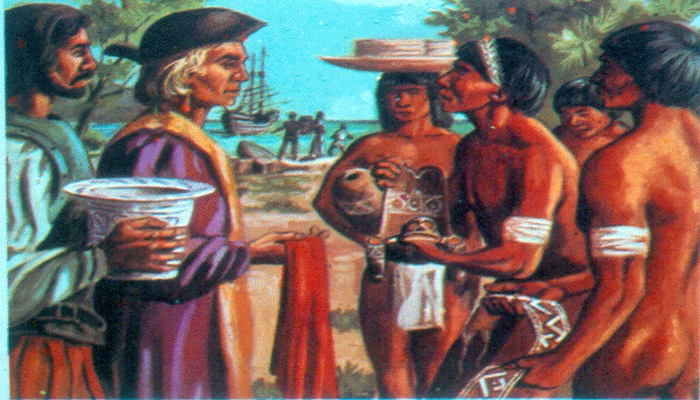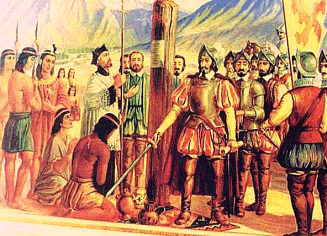Early History of The Bahamas
Historically, the Lucayan Islands were among the last in the region to be permanently inhabited by Native Americans. These islands were at the crossroads of history, where the people of the Old World of Europe were forever reunited with the people of the Ancient World of the Western Hemisphere. This Ancient World was left geologically hinged to the northeastern end of the Asian continent by the now-submerged land bridge known as Beringia. Here among these Lucayan Islands within the Caribbean region, two branches of world civilization reunited after the land bridge between their continental abodes were covered by rising seawater thousands of years ago.
This epic reunion of a long-separated civilization occurred during a historic maritime expedition undertaken by Old World explorers. Although this Ancient World of the Western Hemisphere, now called the Americas, was new to the early European explorers, it was eventually transformed into the New World of the Americas in the aftermath of European explorations, exploitations, conquests, and colonization. The historic landfall by the Italian explorer Christopher Columbus on October 12, 1492, subsequently made the waters surrounding the Lucayan archipelago the birthplace of the Americas. The Spanish later appropriately called the islands “Islas de Los Lucayos” (“Lucayan Islands” in English), after their original Native American inhabitants, the Lucayans. Today, the Lucayan Islands comprise the countries of The Bahamas and the Turks and Caicos Islands.
The historical and cultural evolutions of the modern nations in the Americas originated from these islands' geographical womb. As the site that gave birth to the Americas in 1492, the Lucayan Islands' heritage is just as much that of the wider Americas as it is that of the modern-day inhabitants of The Bahamas and the Turks and Caicos Islands. These world-changing events occurred in and around the Lucayan waters at the beginning of a new era in human history. Through these waters, the people who represented the end of an ancient migration (the Lucayans) came to these islands searching for peace.
Through these waters, the Old World of Europe captured and carried the Lucayans away to work as slaves in the northern Caribbean, where they became extinct. The legacy of their demise was an uncommon birthright. This birthright represents humanity's heart-cry handed down to the modern inhabitants of these islands through the Lucayan extinction. It is the heart-cry for peace, one of humanity’s strongest desires, whose theme is woven throughout these islands' story.

